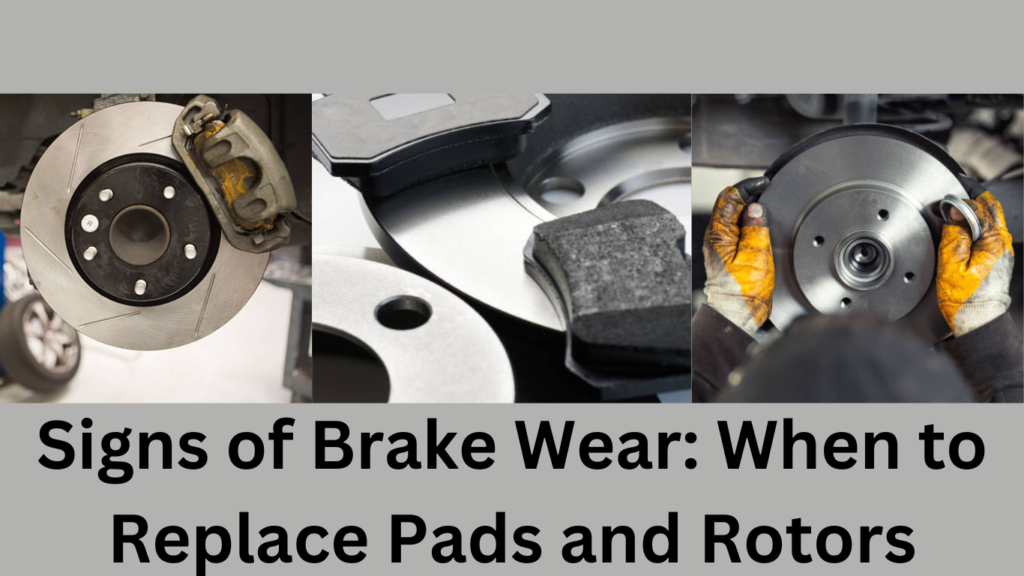If you’re a car enthusiast, there’s a good chance that you’ve pushed your vehicle to the limit at some point. Whether it’s on the track, during spirited drives, or even just navigating through challenging terrain, you’ve likely experienced the importance of reliable brakes. Braking systems play a pivotal role in your vehicle’s safety and performance, but they are not immune to a common issue known as brake fade. In this article, we’ll delve into the world of brake cooling and explore strategies to prevent brake fade, ensuring that your brakes perform optimally when you need them the most.
Understanding Brake Fade
Before we jump into cooling strategies, it’s crucial to comprehend what brake fade is and why it happens. Brake fade is a phenomenon where the braking system loses its effectiveness due to excessive heat buildup. When you step on the brake pedal, your car’s kinetic energy is converted into heat energy through friction between the brake pads and rotors. This heat must be dissipated efficiently to maintain consistent braking performance.
Brake fade can manifest in two primary forms:
- Pad Fade: This occurs when the brake pad material becomes too hot and starts to break down. As the pad material deteriorates, it generates less friction, reducing stopping power.
- Fluid Fade: Brake fluid is a critical component of the braking system. When it gets too hot, it can vaporize, forming gas bubbles in the brake lines. This leads to a spongy pedal feel and diminished braking effectiveness.
Now that we have a basic understanding of brake fade, let’s explore why it’s essential to prevent it and how brake cooling plays a pivotal role.
The Importance of Brake Cooling
Effective brake cooling is the key to preventing brake fade. Without proper cooling, the excess heat generated during heavy braking cannot escape quickly enough, leading to a loss in braking performance. Here’s why brake cooling matters:
1) Safety
The most obvious reason for preventing brake fade is safety. In critical situations, you rely on your brakes to bring your vehicle to a halt swiftly and securely. Brake fade can compromise your ability to stop in time, potentially resulting in accidents or collisions.
2) Performance
Beyond safety, brake cooling also enhances your vehicle’s overall performance. Whether you’re on the track or navigating challenging terrain, consistent and reliable braking is crucial. Cooling strategies can help you maintain optimal braking performance, allowing you to push your car to its limits confidently.
3) Durability
Excessive heat can wreak havoc on your braking components. Brake pads can wear out faster, and rotors can become warped due to extreme temperature fluctuations. Proper cooling helps extend the lifespan of your brake system, saving you money in the long run.
Now that we’ve established the importance of brake cooling let’s explore effective strategies to keep your brakes cool.
Strategies for Preventing Brake Fade
1) Brake Ducts
Brake ducts are a simple and effective way to cool your brakes. These ducts are designed to direct cool air from the front of the vehicle to the brake rotors. The increased airflow helps dissipate heat, keeping the braking system at a more manageable temperature.
Installing brake ducts is a relatively straightforward process, and many aftermarket kits are available for popular car models. However, if you’re not confident in your DIY skills, it’s best to have a professional mechanic install them for you.
2) Upgraded Brake Components
Another strategy for preventing brake fade is upgrading your brake components. High-performance brake pads and rotors are designed to handle higher temperatures and provide better stopping power. These components often have improved heat dissipation properties, allowing you to push your brakes harder without experiencing fade.
When upgrading your brake components, it’s essential to ensure they are compatible with your vehicle and driving style. Consult with a knowledgeable mechanic or do thorough research before making any changes.
3) Brake Fluid
Brake fluid plays a critical role in preventing fluid fade. High-quality brake fluid has a higher boiling point, which means it can withstand higher temperatures before vaporizing. By using a performance-oriented brake fluid, you reduce the risk of fluid fade and maintain a consistent pedal feel.
It’s essential to follow the manufacturer’s recommendations for brake fluid replacement intervals and ensure you use the correct type for your vehicle. Consult your vehicle’s owner’s manual or a trusted mechanic for guidance.
4) Proper Brake Bedding
Proper brake bedding is often overlooked but can significantly impact brake performance and longevity. When you install new brake pads and rotors, it’s crucial to follow a bedding-in procedure. This involves a series of controlled stops to transfer a thin layer of brake pad material onto the rotor’s surface. This layer enhances friction and heat dissipation, reducing the risk of brake fade.
Conclusion
Brake cooling is a critical aspect of maintaining optimal braking performance and safety. Brake fade can happen to anyone, but with the right strategies in place, you can minimize its impact and enjoy consistent and reliable braking. Whether you choose to install brake ducts, upgrade your brake components, use high-quality brake fluid, or follow proper bedding procedures, taking steps to prevent brake fade is a must for any car enthusiast.
Remember that the choice of cooling strategy may vary depending on your driving habits and the type of vehicle you own. Consult with professionals who specialize in automotive performance and braking systems to determine the best approach for your specific needs. By prioritizing brake cooling, you’ll not only enhance your driving experience but also ensure that you and your passengers stay safe on the road. So, the next time you hit the track or embark on a spirited drive, you can do so with confidence, knowing that your brakes are ready to perform at their best.



